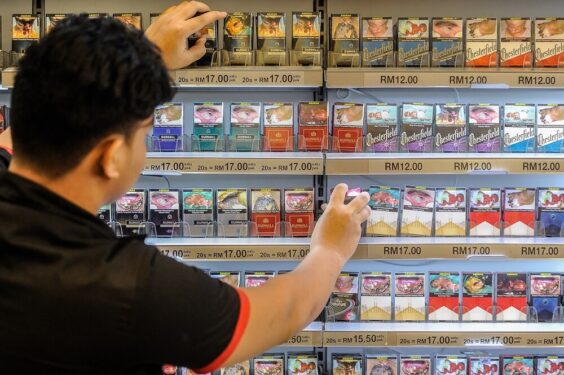WITH COVID-19 ravaging the globe, many businesses were forced to transform their businesses model to keep up with times, on top of reorganising their structure to prepare for the post-pandemic future.
One prominent business, Adobe, were also affected by COVID-19 and embarked on various initiatives to keep abreast with the challenges.
Adobe Southeast Asia (SEA) managing director Simon Dale spend some time sharing his take on the matter with FocusM and below are the excerpts of the interview:
FocusM: How is Adobe coping COVID-19 and challenges it brought?
Dale: The pandemic has changed everything about life and work as we know it. In the past year, we have all focused on how to best protect and support our families, employees, customers and communities in the face of the coronavirus.
At the start of the COVID-19 outbreak, Adobe was part of an early wave of technology companies that sent employees home, for health and safety reasons – just as Governments around the world started implementing lockdown measures such as the movement control order (MCO) in Malaysia and the Circuit Breaker in Singapore.
We adopted a flexible, digital-first mindset in all our engagements, and provided employees internet reimbursements and a “work from home” fund to cover hardware expenditures and ergonomic items to stay productive. Virtual trainings were conducted to help everyone transition quickly and excel in the all-digital environment. Leadership teams also checked in regularly with their staff to provide ongoing support and assistance.
One thing that is undeniable is how the world has moved from a place where digital was a part of it, to a digital-only world – and there was no looking back. It has been more than a year since the pandemic and the world has completely pivoted to engaging digitally – whether it is how we work, learn or play.

Digitalisation today is mission critical, not just something nice to have. That has created a unique opportunity for Adobe to invest in innovation and continue to deliver value to our customers through all three of our businesses – Adobe Creative Cloud, Document Cloud, and Experience Cloud – enabling our customers to be productive and collaborative through this challenging time.
The pandemic has brought new challenges to every business and we have developed a Business Continuity Playbook to share the lessons we have learned from our own experience and our customers.
FocusM: In terms of business turnover, how is Adobe doing and what has your company done to manage the situation?
Dale: Our company’s mission is to change the world through digital experiences and the accelerated digital shift across all sectors have created a tremendous opportunity for our business. In the first quarter of our fiscal year 2021, Adobe achieved record quarterly revenue, representing a 26% year-on-year growth.
Adobe’s Creative Cloud, Document Cloud and Experience Cloud have become mission critical to all customer segments – from students to individuals to large enterprises – across the world.
As for our creative business, everyone has a story to tell. For example, mobile devices today are not just consumption devices, they are also creation devices. The pandemic has changed the way people create stuff– from live photoshoots to digital productions, from paper-based schoolwork to digital reports.
In my view, it is the “golden age of design” – whether people are interacting on a mobile device or instore via a digital screen, there is a creative process and design involved – and that is where we become the platform of choice.
With regards to Document Cloud, when movements are restricted, and people cannot be in physical locations, businesses and individuals have to electronically sign documents and agreements. With that, our Adobe Sign business grew 50% year-on-year as it enables organisations to automate that last mile.
When it comes to powering digital businesses, the ability to analyse data and deliver personalised experience in real-time is a competitive advantage for brands. Customers habits and expectations have changed and they have little tolerance for a bad experience today. Experience Cloud enables brands to manage their experience delivery end to end, across the entire customer journey.
We are optimistic about the future of all three clouds and continue to focus on our employees to make sure they are well supported and equipped to stay productive and collaborative in a work-from-home environment.
Over the last year, we stepped up on employee engagements and rolled out a series of initiatives focused on employee wellbeing, such as conducting regular pulse surveys, while introducing Global Day Offs – shutting down the entire company every third Friday from September through end of last year to help everyone recharge.
FocusM: Any interesting examples of companies which have worked with Adobe to transform their business; creating new opportunities during the pandemic period?
Dale: The pandemic has forced all organisations across the globe to rethink and reimagine their people, processes and technologies faster than ever before.
This is where Adobe has remained committed to its customers, helping them transform their businesses and to overcome the challenges ahead.
For example, CIMB Bank is the foremost example of an organsiation which is leveraging Adobe’s data analytics capabilities to deliver personalised experiences for its customers.
During the first MCO last year, the bank found that its customers are increasingly interested in content around investments, particularly after the Government’s announcement of a six-month loan moratorium.
As a result, CIMB Bank shifted its content strategy to focus on investment-related topics. By turning customer insights into action, its curated content around investments gained significant momentum and interest, resulting in a 40% click-through-rate, along with an increased time spend on site.

As for Singapore reopening, we are working closely with Singapore Tourism Board (STB) to digitalise their operations and content assets. The Tourism Information & Services Hub, for example, has almost 3,000 local tourism partners contributing royalty-free-destination assets that other members can leverage through APIs to promote Singapore with.
This central repository and network enable content velocity to all members by reducing content recreation from scratch. STB has also created the Singapore Tourism Analytics Network (STAN), a common data platform that allows its tourism partners to exchange and leverage data on traveler preferences to look for new opportunities in a vastly transformed tourism landscape.
In the US, prior to COVID-19, the city of Seattle was still heavily reliant on manual paper processes. When the pandemic first landed in the US, in just a few weeks, local residents went from being considered low-risk to learning that the first confirmed COVID-19 death in the US was reported in the county – resulting in an immediate pivot to a telework environment.
The city digitalised several departments overnight, deployed thousands of headsets and laptops for employees to work from their homes, on top of rolling out 3,000 Adobe Sign licenses to its staff within three months to ensure operational continuity. – June 22, 2021.










